Francois or Frederick Francis Alexandre (1809-1889) was the founder of the family fortune and my wife’s great great grandfather. His was a real American success story. His obituary gives some details of his life:
Francois Alexandre, a merchant, born in Jersey on 5 August 1809, died in New York City on 8 June 1889. He was the son of a farmer. With an inclination for a sailor’s life, he went to sea at an early age, and acquired an education by attending school during his stay in various ports and devoting the spare time on ship to reading.
At the age of twenty-one he took command of a vessel, which he directed for years, renouncing in favor of his sisters the estate which he had inherited from his father. When about 28 years old, the young captain settled in New York City, establishing a small commission house in South Street, paying at first an annual rent of $25.
In 1842 he established a line of sailing vessels between New York and Honduras, and subsequently between New York, Vera Cruz and South America. In this enterprise he succeeded so well that, in 1867, he sold the sailing vessels, substituted steamers, and for 19 years carried mails, freights and passengers between New York, Havana, and Mexico.
A few clarifications can be added to this brief account.
He was born on St. Heller Isle. When his father died when Francis was thirteen, under the English law of primogeniture he would get the family property, but renounced it because his “sturdy English self-reliance.” He went to sea “before the mast.” At twenty-one he commanded the Nina on a voyage from Liverpool to Rio de Janeiro. He was active in the Brazil trade, but saw greater possibilities in New York. When he married in 1838, he gave up sailing and opened a chandler’s shop on Washington Street in Manhattan.
He quickly branched out into shipping, and at one point owned fourteen ships. The Alexandre line was the first to have regularly scheduled sailing between New York, Cuba, and Mexico. It got a subsidy from the Mexican government to carry the mail. It also began the Caribbean tourism business. The Alexandre company issued to pamphlet, New and Varied Excursion to the Tropics for Invalids and Tourists. A tourist guide noted that the sailings were regular but not always on schedule:
The Alexandre line publishes a pamphlet in which the time of the voyage from New Orleans to Vera Cruz is stated as “about five days” and from New York to Vera Cruz as “about ten days.” This statement often proves untrue, unless great latitude is given to the word “about.”
Weather was unpredictable, and could delay landing in Mexico for days.
The company flourished for decades. However, in 1887 the government of Mexico transferred its subsidy to a heavily subsided Spanish shipping company and te line was no longer viable. Alexandre and his sons liquidated the company and sold its ships to its competitor, the Ward Line (of Moro Castle fame). Francis died on June 8, 1889.
In 1838 Francis had married Marie Civilise Cipriant (1811-1882). He was Episcopalian and she was Catholic. He never became Catholic, but attended church with her. Three sons, John, Joseph, and Henry survived him.
The Alexandre Line Ships
The City of Puebla
The Alexandre line has introduced another improvement, in such ships as the City of Pueblo. The saloon is provided with small tables, as in a restaurant. The passenger is not obliged to eat with a crowd of strangers, but selects his own time for meals, paying only for what he orders.
The City of Washington
The City of Washington was launched on August 30, 1877 in Chester, Pennsylvania.
she can accommodate 100 first-class passengers, with 75 state rooms, besides accommodations for officers, crew and 250 steerage passengers.
The City of Washington was sold to the Ward Lines, and had an exciting career.
The night the Maine exploded in Havana Harbor (February 15, 1898), the City of Washington was also moored in Havana Harbor. Moored in close proximity to the Maine, the City of Washington suffered injury to her awnings, raise and deck houses by flying debris. Immediately after the explosion, finding the Maine a disaster, the crew of the City of Washington went to aid the Maine. The first round of emergency boats lowered were destroyed by flying shrapnel. After the second round of boats reached the water, the City of Washington, and the Spanish cruiser, Alfonso XII assisted in the rescue of the crew of the Maine. The City of Washington formed a makeshift hospital from their dining salon.
Eventually the City of Washington was cut down and used as a coal barge.
On July 10, 1917, City of Washington and another barge, Seneca, were under tow by the tugboat Luckenbach 4 when all three vessels ran aground on a shallow reef near Key Largo in the Florida Keys.
The wreck of the City of Washington has become a popular dive site.
The City of Vera Cruz
On August 28, 1880, a terrible hurricane struck the City of Vera Cruz. One of the steamer’s lifeboats was loaded with people and readied for launching, but the boat was dashed to pieces before they even reached the water. Those who were not crushed to death outright were dropped, half stunned, into the sea, where they were drowned. A second boat met the same fate.
Men and Women were in the cabin praying and shrieking, and screaming. All of a sudden there was a snapping sound as of many timbers giving way. In the next minute the City of Vera Cruz went down, carrying all aboard. Then one person and another came to the top, grasping wildly for something to support them. The nearest land (Cape Canaveral, Florida) was almost thirteen miles away, and there was no way that the current was going to let them swim straight for it. The water was dotted with their heads and was filled with heavy pieces of wreck. Some of them were struck by this stuff, and so much stunned that they went down again, never to come up. Sixty nine men women and children perished.
Somehow, eleven men found the courage, strength and stamina to survive the mountainous seas and the foam which they sucked in with each tortured breath. Twenty six hours later the, by then, nude, battered and exhausted survivors struggled ashore about fifteen to twenty miles south of Daytona.
General Torbert, an old man with a white beard, who had once fought bravely in the Civil War, was among those who managed to make it to the beach alive. The fearless, but tender General had sought to calm the crying children before the ship sank, and he deserved to live. But, the General’s old body had been pushed to far, and he died at the water’s edge.
A mother, tightly clasping her daughter to her chest, was sighted shortly after the ship went down. A day later, over thirty miles from the wreck, still bound in the same embrace, they came ashore, but both were dead. Seaman James H. Kelly had saved the lives of others on four previous occasions, and it was now his turn to be saved. Kelly may have felt the hand of God on his shoulder as he stumbled ashore. But Kelly and the others who survived the tempest were to live with the nightmare of it for the rest of their lives.
It has become a popular dive site. Shipwrecks, Inc. has tried to locate and salvage treasure. Two passengers were jewelers who were taking their products to Mexico to open a store there.
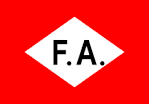
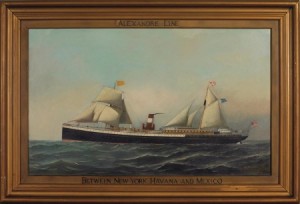
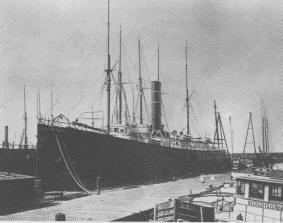
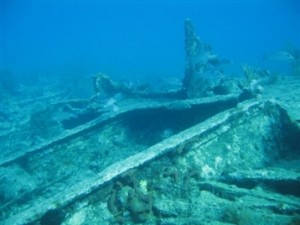
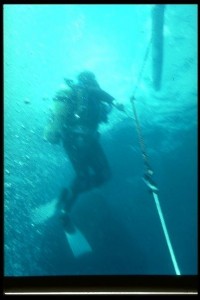
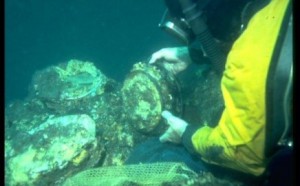
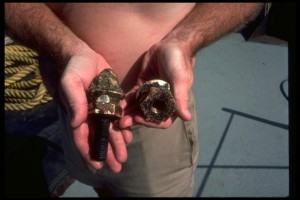
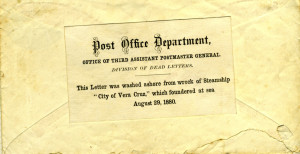
My relatives had been on the City of Vera Cruz a month before the sinking. I have reason to think that my great grandfather may have been the ship’s doctor and perished on the outbound leg from NY. Can you tell me where i might find info on the names of the crew that perished???
I will see if I can find anything
My name is Michael Zara and my mother was Mathilde Alexandre Zara. Frederick Francis Jr. was my grandfather. I appreciate your research. Who is your wife and who was her father?
My name is Patricia Alexandre biesemeyee. My mother was Patricia Alexandre. Frederick Francic Jr was my grandfather. Michael Zara , my first cousin. Very imterested in the research too. Would
love to hear above replies
Thank you
I tried to send you an e-mail with your family tree but the address does not work
Message to Michael Zara. This is Claudia Clark, another Alexandre decendent. Your parents, Mat and Mike, were friends of my parents. My grandmother was Gertrude Alexandre (and I’d have to look to see which of the Alexandre brothers was her father). My father did a very extensive family tree beginning with Marie Civilise Cipriant. I’d be happy to get a copy to you.
Another message to Michael Zara. My parents were Bobby (Francis Adams) and Peggy (Margaret) Clark, NYC.
Hello: My name is Tadeo, I am a historian and I am looking for information about a steamer that apparently belonged to the Alexandre Line. The steam was called City of Havana. Do you have information about this steam? I would be very grateful if you sent me information to my mail: josetapanes@hotmail.com THANKS.
The only information I have is from Google. Try “City of Havana” and Alexandre or “Alexandre Line”